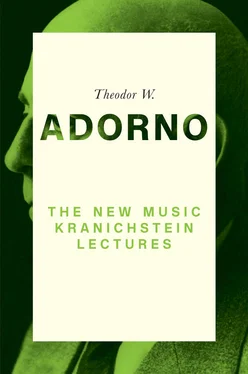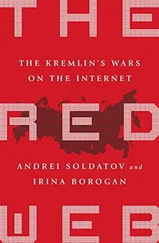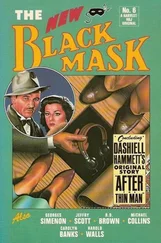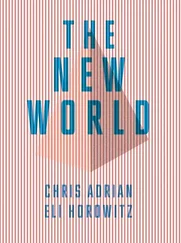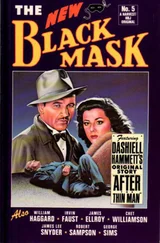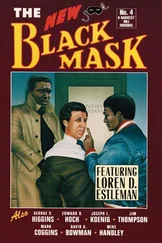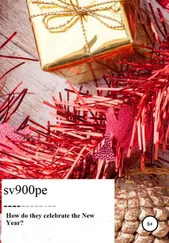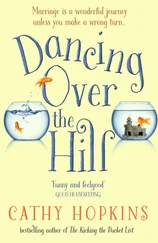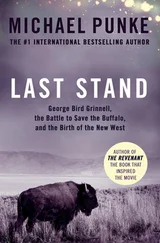Now, the song of Tove that follows this introduces a very strong contrast because, even though it uses the same kinds of muted colours, it is now highly polyphonic, working with a very high degree of imitation. So, without any reduction in its dynamics or its strength, it remains in the same territory. And then there is a rather long, scherzo-like part, but I have no more time to go into that. Next time I would like to continue, and especially show you a few examples of the treatment of tonality in Gurrelieder , as well as the choral writing, and then we will focus on the op. 6 songs and I will try, proceeding from the op. 6 songs, to say a few things about op. 7 and about the Chamber Symphony, op. 9. You will have noticed today that I was already analysing these works teleologically – that is, with reference to the development towards those other works. – Thank you.
1 1. Dehmel’s poem “Verklärte Nacht” reads:Two figures pass through the bare, cold grove;The moon accompanies them, they gaze into it.The moon races above some tall oaks;No trace of a cloud filters the sky’s light,Into which the dark treetops stretch.A female voice speaks:I am carrying a child, and not yours;I walk in sin beside you.I have deeply sinned against myself.I no longer believed in happinessAnd yet was full of longingFor a life with meaning, for the joyAnd duty of maternity; so I daredAnd, quaking, let my sexBe taken by a stranger,And was blessed by it.Now life has taken its revenge,For now I have met you, yes you.She takes an awkward step.She looks up: the moon races alongside her.Her dark glance is saturated with light.A male voice speaks:Let the child you have conceivedBe no trouble to your soul.How brilliantly the universe shines!It casts a luminosity on everything;You float with me upon a cold sea,But a peculiar warmth glimmersFrom you to me, and then from me to you.Thus is transfigured the child of another man;You will bear it for me, as my own;You have brought your luminosity to me,You have made me a child myself.He clasps her round her strong hips.Their kisses mingle breath in the night air.Two humans pass through the high, clear night.(Trans. Scott Horton for Harper’s Blog, 25 January 2008: https://harpers.org/2008/01/dehmels-transfigured-night/)
2 2. In the second scene of Bertolt Brecht’s didactic play Der Neinsager [The naysayer] (1930), the boy says, ‘If someone says a, they needn’t say b. They might recognize that a was wrong’ (Bertolt Brecht, Werke, ed. Werner Hecht et al. [Frankfurt, Berlin and Weimar: Suhrkamp, 1988], p. 71).
3 3. René Leibowitz directed a course in composition. Describing the idea to Wolfgang Steinecke in a letter of 3 February 1955, he wrote that he wanted to show ‘how certain compositional conditions are met in all good music. One could include a few well-chosen examples, e.g. a song, a symphony movement and an opera scene, and try to show how the different composers (from Mozart to Schoenberg, shall we say) approached it, i.e. the way in which each of them solved this problem’ (quoted in Von Kranichstein zur Gegenwart: 50 Jahre Darmstädter Ferienkurse, 1946–1996, ed. Rudolf Stephan et al. [Stuttgart: DACO, 1996], p. 80).
4 4. In the text ‘Heart and Brain in Music’, Schoenberg writes:Thus it will be as astonishing to you as it was to all my friends when I came with the score of Verklärte Nacht and showed them one particular measure on which I had worked a full hour, though I had written the entire score of 415 measures in three weeks. This measure is indeed a little complicated since, according to the artistic conviction of this period (the post-Wagnerian), I wanted to express the idea behind the poem, and the most adequate means to that end seemed a complicated contrapuntal combination: a leitmotif and its inversion played simultaneously. This combination was not the product of a spontaneous inspiration but of an extra-musical intention, of a cerebral reflection. The technical labour which required so much time was in adding such subordinate voices as would soften the harsh frictions of this combination. (Schoenberg, Style and Idea, pp. 55f.)
5 5. See Richard Strauss, Tod und Verklärung, op. 24 (1888–90).
6 6. ‘Warnung’ is the third song from the cycle Six Songs for Middle-Register Voice and Piano, op. 3 (1899–1903).
7 7. ‘Peripetie’ is the fourth piece.
8 8. There are two arrangements for string orchestra, from 1917 and 1943 (the revised version).
9 9. ‘In composing I make decisions only according to feeling, according to the feeling for form. This tells me what I must write; everything else is excluded’ (Schoenberg, Theory of Harmony, p. 417). In a letter to Alexander Zemlinsky, Schoenberg comments on the latter’s wish to cut one passage for a performance of Pelleas und Melisande: ‘Apart from the fact that it [the passage] follows the line of the drama (which would no longer strike me as the most essential thing), it seems to me justified (and this is more important to me than justification in the light of a formal scheme) by the sense of form and space that has always been the sole factor guiding me in composition, and which was the reason why I felt this group to be necessary’ (Schoenberg, Letters, p. 55).
10 10. The logo designed by Paul Thesing featuring the ascending fourths from the introductory theme of Schoenberg’s Chamber Symphony, op. 9, was used at the summer course until 1962; it was also reproduced on the covers of the series Darmstädter Beiträge zur Neuen Musik. See Gianmario Borio and Hermann Danuser (eds), Im Zenit der Moderne: Die Internationalen Ferienkurse für Neue Musik Darmstadt 1946–1966, Geschichte und Dokumentation in vier Bänden, Vol. 1 (Freiburg: Rombach, 1997), p. 30.
11 11. In an issue of the journal Pult und Taktstock devoted to Schoenberg, the conductor Ernst Kunwald (1868–1938) wrote of the Chamber Symphony:The most interesting passage in the whole piece for me, however, is the end of the development section shortly before the slow movement, where all traces of the tonality still maintained before then gradually disappear, augmented triads whirl about, the fourths motif takes everything over step by step, and then a chord of six stacked fourths is vehemently repeated. Then, in the quietest pianissimo, one hears harmonics in the double bass, cello and viola intoning the fourths motif; the strings rise in fourths, encircled by arpeggios of fourths in the wind, to the greatest heights. An atmosphere as icy and solemn as a glacier – a music surely like none ever imagined before. (Ernst Kunwald, ‘Die Kammersymphonie’, in Pult und Taktstock, Fachzeitschrift für Dirigenten: Arnold Schönberg und seine Orchesterwerke [Vienna: Universal Edition, 1927], p. 35)
12 12. See Alban Berg, Arnold Schönberg, Gurrelieder: Führer (Leipzig and Vienna: Universal Edition, 1913), now in Sämtliche Werke, ed. Rudolf Stephan et al., Section III: Musikalische Schriften und Dichtungen, Vol. 1: Analysen musikalischer Werke von Arnold Schönberg (Vienna: Universal Edition, 1994), pp. 1–81.
13 13. The ‘sleep harmonies’ first appear in Act 3 of Die Walküre, directly before Wotan’s words ‘Denn so kehrt der Gott sich dir ab / so küsst er die Gottheit von dir’ [And so the god / turns away from you / so he kisses your godhead away]. A series of woodwind chords begins on the last word. Adorno may also have been thinking of the scene with Wotan and Erda from Act 3 of Siegfried; here the sleep motif first enters when the curtain rises, then returns four bars before Erda’s words ‘Stark ruft das Lied’ [Strong is the call of the song] and also at the words ‘Mein Schlaf ist Träumen’ [My sleep is dreaming] and ‘Die Walküre, der Wala Kind’ [The Valkyrie, child of Wala]. It also appears in a fragmented form at Wotan’s words ‘Hinab, zu ew’gem Schlaf’ [Down, to eternal sleep] during the last four bars of the scene (with thanks to Johannes Dombois for this information).
Читать дальше
